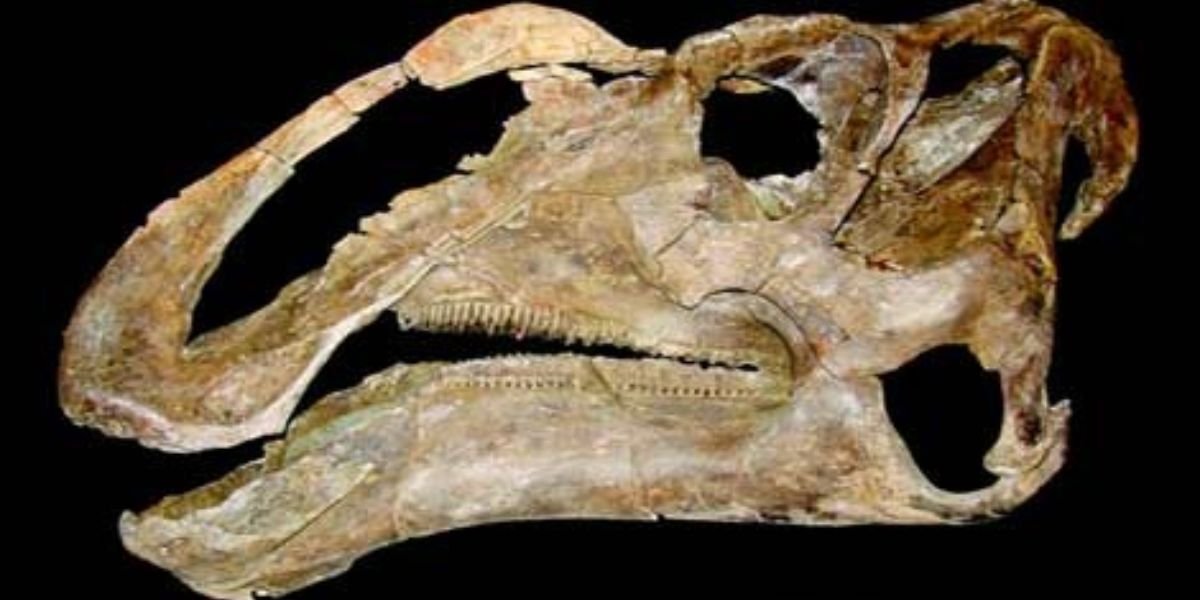It turns out that a previously unlisted species of duck-billed dinosaur from northern New Mexico has now been officially identified. This dinosaur roamed the Earth during the late Cretaceous period, around 75 million years ago, when rivers meandered across a warm coastal plain.
The fossils were first collected in 1916, but for decades, they were classified under a different species name. A recent and thorough reexamination of these bones has revealed that they belong to an entirely distinct species.
What the Group Discovered
According to the reanalysis, the duck-billed skull belongs to a new dinosaur species called Ahshislesaurus wimani. The classification is based on specific characteristics of the skull roof and jaw, as described in a recently published peer-reviewed study.
Lead scientist Spencer G. Lucas of the New Mexico Museum of Natural History and Science (NMMNHS), working alongside colleagues in Slovakia and the United States, oversaw the categorization process.
Ahshislesaurus is part of the Hadrosauridae family, commonly referred to as “duck-bills.” These dinosaurs were herbivorous and had wide, beak-like snouts. Unlike some of its relatives, this species had a flat-shaped skull with no towering head crest.
Based on fossil evidence, the dinosaur measured approximately 35 feet (10 meters) long and weighed over 9 tons. Lucas stated, “This new hadrosaur just strengthens my belief that there are still a ton of undiscovered dinosaurs out there.”
The bones originated from the Ah-shi-sle-pah Wilderness in San Juan County. Before reexamination, the head and neck bones were cataloged under the name Kritosaurus navajovius.
The Significance of This Duck-Billed Dinosaur
During the latter part of the Cretaceous, hadrosaurs were among the most common large herbivores in North America. According to a foundational study by Horner and colleagues, they grazed in large numbers on floodplains and river deltas for roughly 20 million years.
Ahshislesaurus belongs to the Saurolophinae subgroup of flat-headed hadrosaurids, defined as species that typically lack hollow, tube-like crests. This sets them apart from the more flamboyant lambeosaurines.
The discovery of a new saurolophine in New Mexico supports the idea that western North America had notable regional diversity. This distribution indicates that local ecosystems and historical barriers shaped the evolution of dinosaurs.
Furthermore, the species adds to the growing list of dinosaurs from the Kirtland Formation. Discoveries from New Mexico’s late Cretaceous period help fill in gaps left by better-known fossil sites such as Montana and Alberta.
How the Riddle Was Resolved
To classify the dinosaur, the research team plotted anatomical characteristics on a family tree and compared the skull with other hadrosaur species. Their phylogenetic analysis showed that Ahshislesaurus is most closely related to Naashoibitosaurus, which comes from neighboring rock formations.
To confirm their results, the researchers conducted both a Bayesian study and a parsimony analysis. Both methods placed the species in a similar position within the hadrosaur family tree.
Notable anatomical features include a strong cheek region, a quadrate bone positioned posterodorsally, and a tooth row firmly anchored by the deep front portion of the lower jaw.
The holotype—the reference skeleton used for species identification—includes numerous neck vertebrae, jaw elements, and a partial skull, forming the basis for the species designation.
Life in Late Cretaceous New Mexico
Ahshislesaurus shared its habitat with horned dinosaurs like Navajoceratops and armored ankylosaurs, grazing in river-rich plains. Predators, including tyrannosaur relatives, roamed the levees and canals of this ecosystem.
This period corresponds to the Campanian stage, which lasted from 83 to 72 million years ago, within the late Cretaceous. The fossils come from the Hunter Wash Member of the Kirtland Formation.
During this time, Laramidia, the western part of North America separated by an inland sea, included the area. Geographic isolation likely contributed to local variation in dinosaur populations.
Plant life consisted of conifers and flowering plants, providing ample food for wide-jawed, plant-eating hadrosaurs. With their numerous teeth, hadrosaurs could continuously graze and process large amounts of vegetation.
What the Name Indicates
The genus name Ahshislesaurus honors the Ah-shi-sle-pah region, where the fossils were discovered. The species name wimani recognizes Carl Wiman, an early scientist who studied fossils from the San Juan Basin.
Zoological naming rules require a definitive diagnosis and permanent record. The research team registered the name, including detailed measurements and comparative data.
A Reflection on the Wider Perspective
The discovery of Ahshislesaurus improves our understanding of southern Laramidian hadrosaurs. Flat-headed species like Ahshislesaurus and Naashoibitosaurus coexisted alongside deeper-snouted Kritosaurins, showing significant diversity in head shapes.
Interestingly, Parasaurolophus and other tube-crested lambeosaurines also inhabited the region. Recent research on crest re-description highlights how variations in headgear evolved among hadrosaurs.
Hadrosaurs displayed diversity beyond head shape, including differences in tooth count, cheekbone structure, and jaw depth, reflecting variations in diet and environmental adaptation.
As museums continue to reexamine older collections, misclassified fossils may reveal additional undiscovered species, making the study of these ancient giants an ongoing adventure.
The findings are documented in Bulletin 101 of the New Mexico Museum of Natural History and Science.
















